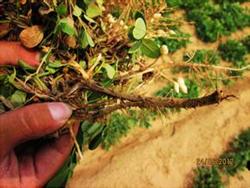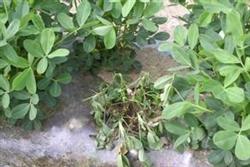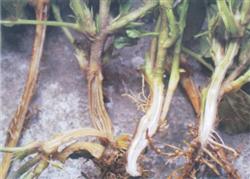What is the benefit of organic fertilizer to the growth and development of peanut?

The main results are as follows: (1) Organic fertilizer contains many kinds of nutrient elements, such as nitrogen, phosphorus, potassium and so on. Organic fertilizer has high fertilizer efficiency, long fertilizer effect and stable fertilizer effect, which can continuously supply the nutrition needed by peanuts for a lifetime. (2) Organic fertilizer is composed of excreta and residues produced in the life activities of animals and plants, which produce heat during fermentation decomposition, increase soil temperature, promote the activities of microorganisms and rhizobium, and accelerate soil ripening. It is beneficial to the activity of root system and rhizobium. (3) long-term application of organic fertilizer can improve soil and improve the ability of soil water storage, soil moisture conservation and fertilizer conservation. (4) through microbial decomposition, organic matter synthesizes humus and decomposes to produce elements such as nitrogen, phosphorus and potassium, as well as carbon dioxide and carbon nutrition, which is helpful to the decomposition and transformation of mineral fertilizers. (5) the mixed application of organic fertilizer and chemical fertilizer can give full play to the role of chemical fertilizer.
- Prev

Integrated Control of Peanut Fusarium Wilt covered with plastic Film in early Spring
Peanut wilt includes many diseases, such as blight, root rot, white silk disease, stem rot and so on, which seriously affect the production of peanut covered with plastic film in early spring. First, the common characteristics of the disease are that the stems or leaves of peanuts wither and become discolored and necrotic. The disease is serious in general continuous cropping land and poor soil quality land, rotation cropping land and fertilizer.
- Next

How to control peanut bacterial wilt?
How to control peanut bacterial wilt? (1) rotation: the rotation of water and drought has obvious effect after 1 to 2 years. The rotation of dry land and cereal crops was 1 ~ 3 years in mildly diseased land and 4 ~ 5 years in seriously diseased land. (2) selection of disease-resistant varieties: at present, the disease-resistant varieties are Xiekangqing, Ehua 5, Zhonghua 2, You92, Guiyou 28.
Related
- The first cup of black tea in spring, the flavor and history of tea gardens in Kenya, Africa
- The computer can not only choose potatoes, but also grow tea rice. AI will grow winter oolong tea champion.
- It is not only the inflated tea bitten by insects, but also engraved with the four seasons tea in Beipu.
- The Oriental Beauty Tea Festival in Zhuxian County takes the stage at the weekend to experience the plus-size feast of oil tea.
- & quot; Oriental Beauty Tea & Exploration of Emei in Hsinchu, the hometown of quot;
- The new variety of strawberry "Tainong 1" dessert is the first choice with mellow aroma. Crimson gorgeous
- History of Tea in Taiwan: from Wild Inner Mountain to Export Tea Garden
- Two types of Taiwan Oriental Beauty Black Tea won the British three-Star Award for Childhood Tea Xiang Zhang Jiaqi changed from pilot to champion tea maker.
- Banana species and varieties: the planting history of Taiwan Xianren banana and dwarf banana is long, is banana disease resistant?
- Coffee planting Technology: Qianjie Coffee from Seedling to harvesting

